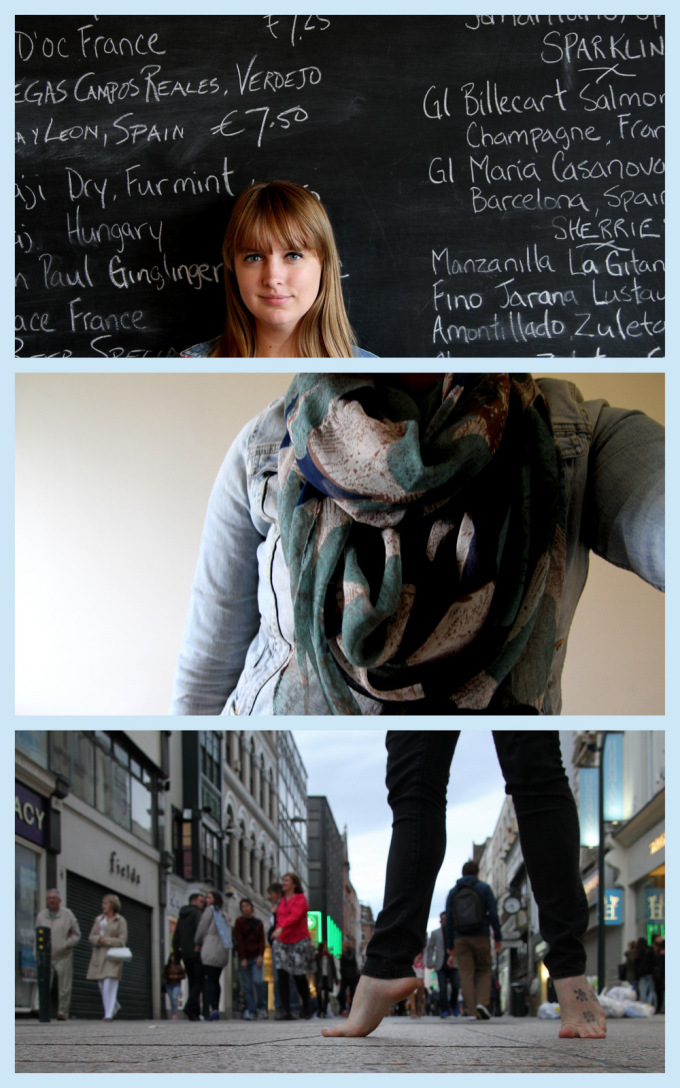This post could be subtitled “What I did on my summer vacation…”
During a five week study abroad program in collaboration with the University of Illinois at Chicago and University College Dublin, during the summer of 2015, I had the pleasure of working with two undergraduate students on a qualitative research project related to sports psychology and dance. What we found were more similarities than differences, and a welcoming, inquisitive, innovative dance community in Dublin. What follows below is a culminating piece from this work, the analysis of which is ongoing. This piece was originally published on the group’s study abroad website, and is presented on this site with some revisions and modifications.

Title: Triangulation: Researching Dance in Dublin
Date: July 19, 2015
Photographer: Lauren Warnecke
Pictured: Melissa Donegan (top), Lauren Warnecke (middle), Kristina Kuta (bottom)
“The image of research” is a single image capturing a holistic representation of an idea, question, or experiment. While abroad in Dublin, I sought to investigate and understand what “good dance” is, through the eyes of a community other than my own.
Being a dancer, I had the capacity to conduct my work as a participant-observer while in Dublin, but initially I made a deliberate choice to be an observer. In observation, however, the researcher remains an outsider. Knowing this, how could I ensure that what I captured was true to the experience of the dancers I investigated?
The truth is, I couldn’t. An ontological assumption of most qualitative research is that multiple realities exist, validated by seeking a variety of methods by which to investigate a research question (Creswell, 2013). Triangulation, by definition, acknowledges ontology (the multiplicities of being) through obtaining multiple data sources, approaching a problem with more than one theory, or utilizing multiple investigators (Flick, 2000/2004).
By recruiting a team of researchers filling a variety of roles, the data more strongly and accurately represented the members’ realities, better describing what took place than if I had worked alone. The above collage of photographs is a visual representation of how Melissa, Kristina, and I triangulated our data by diversifying the places and people we interacted with, and the multiple roles we took on.
—
References:
- Bernard, H. R. (2006). Participant observation. Research methods in anthropology: Qualitative and quantitative approaches (4th ed.) (pp. 342-361). Lanham: AltaMira Press.
- Creswell, J. W. (2013). Qualitative Inquiry & Research Design: Choosing Among Five Approaches(3rd Ed.). Thousand Oaks, CA: SAGE Publications, Inc.
- Flick, U. Triangulation in Qualitative Research (2004). In U. Flick, E.W. Kardorff, & I. Steinke (Eds.), A Companion to Qualitative Research (pp. 178-183). London: SAGE Publications, Inc. (Original work published in 2000).
